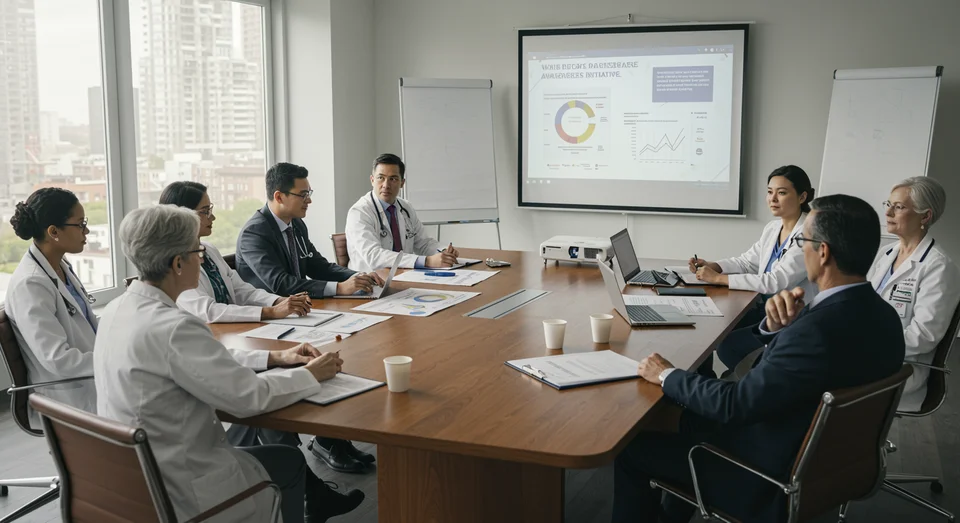Granulomatous Mastitis: Tami Burdicks Advocacy Transforms Rare Disease Awareness
959 views
A Rare Battle: Tami Burdick’s Journey Through Misdiagnosis and Advocacy
It began with a sharp pang in her breast, an ache that refused to ebb away. For Tami Burdick, the discovery of a lump was the start of a harrowing medical odyssey, one that would lead her to the brink of a cancer diagnosis before revealing a much rarer culprit—granulomatous mastitis (GM). This inflammatory breast disease, often shrouded in mystery, was eventually traced to an unlikely source: bacteria lurking in the water of a hotel shower. Burdick’s experience, marked by missteps and revelations, has become a rallying cry for patient self-advocacy and integrative medical care.

At first glance, the signs were ominous. Breast pain coupled with a palpable lump led medical professionals to suspect the worst: breast cancer. A biopsy, however, ruled out malignancy, leaving Burdick with more questions than answers. The diagnosis of GM arrived soon after, but even that was only the beginning of her search for clarity. Granulomatous mastitis is an uncommon condition, and its origins are often elusive, leaving patients caught in a cycle of uncertainty and invasive procedures.
For Burdick, the turning point came through collaboration—both within the walls of the clinic and beyond. Her surgical oncologist teamed up with a functional medicine practitioner, a partnership that proved pivotal in identifying the root cause of her illness. Burdick’s own relentless research further illuminated the path forward. Together, they traced her GM to Corynebacterium kroppenstedtii, a bacterium rarely associated with breast disease. This microscopic invader had found its way into her body during a business trip, lurking in the water of a hotel shower.
The diagnosis was a revelation, but it did not come without its scars—both physical and emotional. Burdick underwent a grueling regimen of antibiotics and surgeries, each procedure carving reminders of her battle into her skin. Today, she wears those scars with a sense of pride, calling them her “warrior wounds.” Her GM is now in remission, but the lessons she learned along the way have left an indelible mark on her perspective.
At the heart of Burdick’s story lies a powerful message about the importance of self-advocacy in medical care. Her journey underscores the need for patients to take an active role in understanding their diagnoses, questioning assumptions, and seeking alternative viewpoints when conventional approaches fall short. She credits her own determination and open-mindedness as critical factors in avoiding unnecessary treatments that could have caused more harm than good.
Equally striking is her call for greater collaboration between traditional medical professionals and practitioners of functional medicine, a field that often focuses on holistic and root-cause approaches to illness. Burdick believes that bridging the gap between these two worlds can lead to more nuanced and effective care, reducing the risk of misdiagnosis and overtreatment. Her experience serves as a testament to the power of integrative approaches, where diverse perspectives converge to uncover solutions that might otherwise remain hidden.
Granulomatous mastitis remains a relatively unknown condition, often misdiagnosed or misunderstood. Burdick’s advocacy has brought much-needed attention to the disease, highlighting the challenges faced by those who live with it. She continues to raise awareness, urging medical professionals to listen more closely to their patients and to consider the broader context of their symptoms. Her story is not just about overcoming illness; it is about transforming the way healthcare systems approach rare and complex conditions.
In reflecting on Burdick’s journey, one cannot help but consider the broader implications for medical practice and patient care. Her experience shines a light on the gaps that still exist in diagnosing and treating rare diseases, as well as the potential for harm when assumptions go unchecked. It also raises questions about the role of patients as active participants in their own healthcare, challenging the traditional dynamic between doctor and patient.
Ultimately, Burdick’s scars tell a story of resilience, curiosity, and a refusal to accept easy answers. Her journey reminds us that the path to healing is often a winding one, requiring courage not only from those who treat but also from those who endure. Through her advocacy, she has turned her personal struggle into a beacon for others, proving that even in the face of uncertainty, there is power in asking questions, seeking collaboration, and embracing the search for truth.
